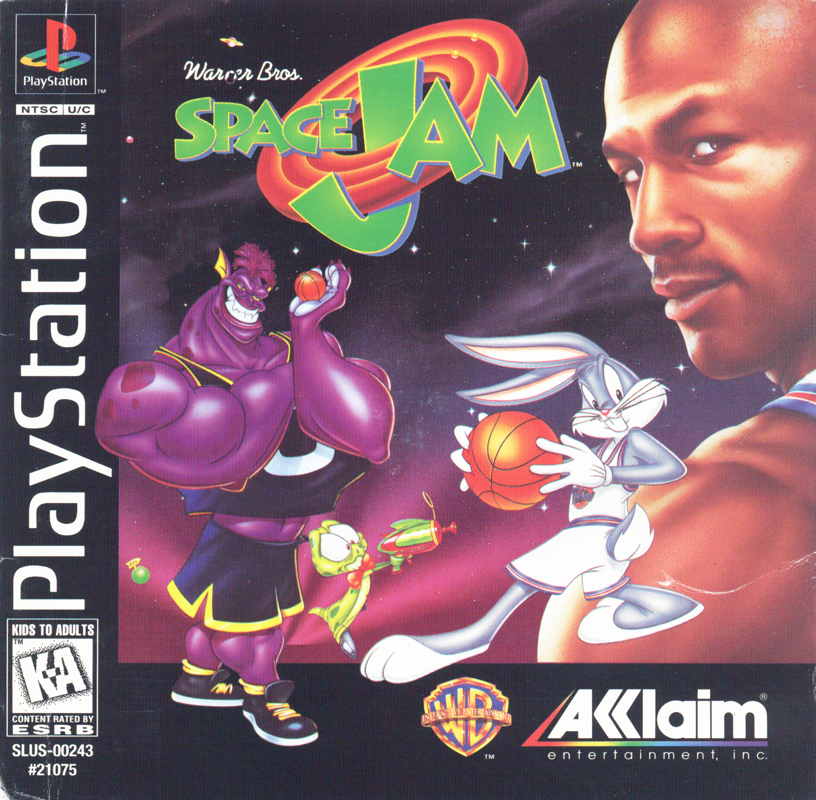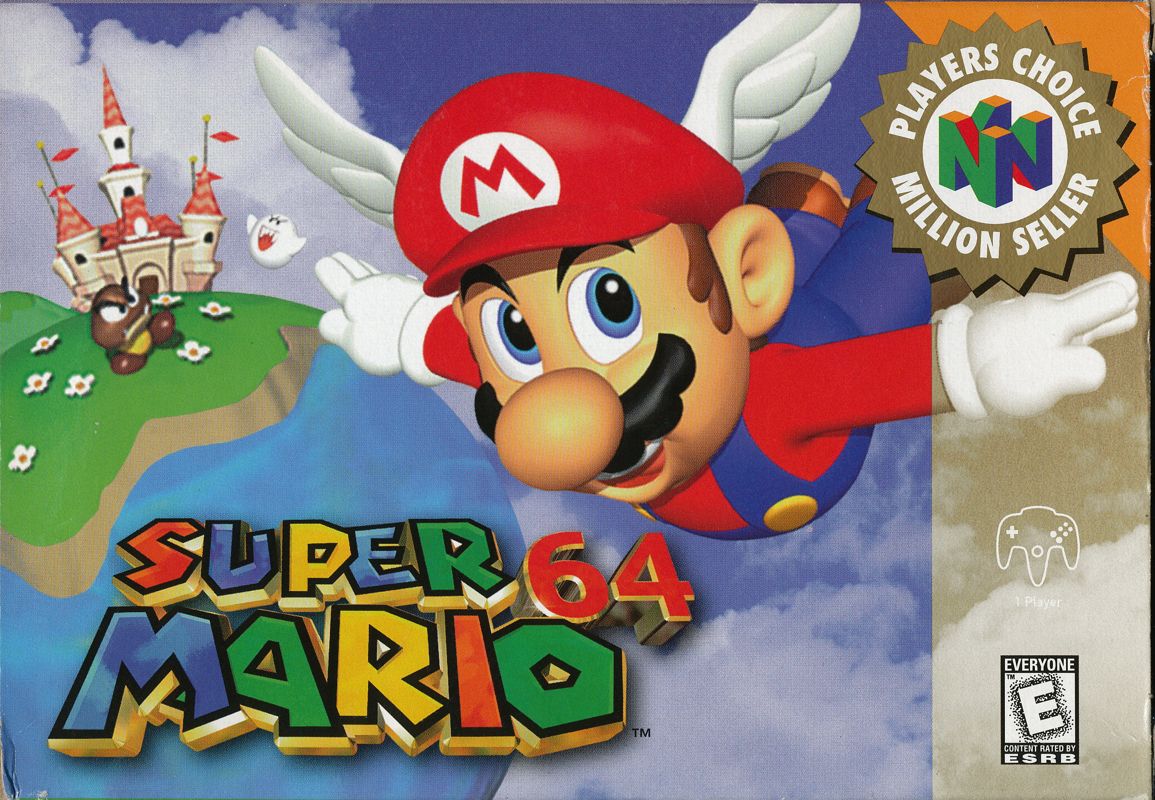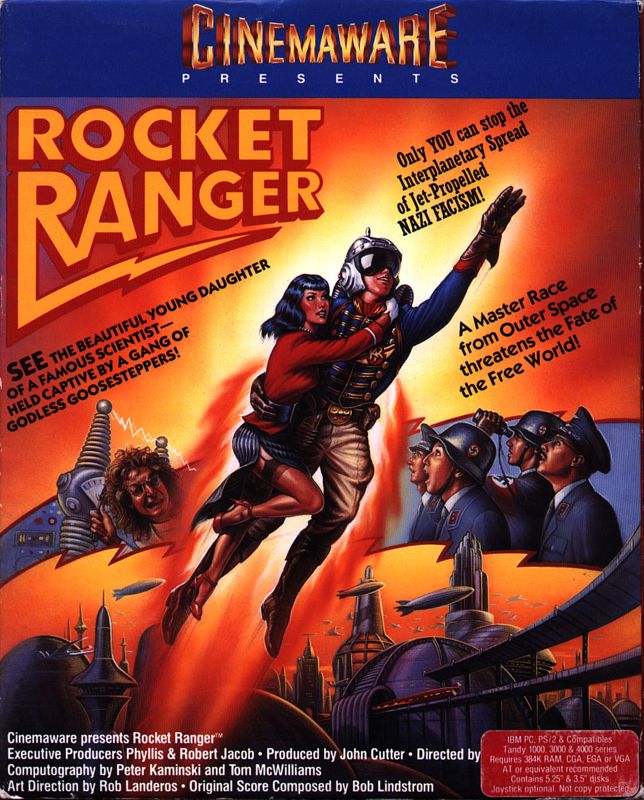System: PlayStation
Genre: Action, 3rd person
Year: 1999?
Developers(s): Blue Sky Software, published by Titus
Hello and welcome! My name is Ognimod and I run this little repository for the stuff I like to write. For a little while, I’ve been entertaining the idea of writing an old video game review blog in English to serve as a supplement for my already existing one in Spanish, which you can read (if you can read Spanish, I mean) at https://ognimod.wordpress.com . I have lots of English-speaking pen pals and acquaintances who I’m sure would love to read my material; the question was, which game to talk about first? Lo, the opportunity has come knocking on my door. Is it a good one?
Writer Mark Twain once humorously defined the word “classic” as “a book which people praise and haven’t read”. The rise of Internet reviewers has given us what I call the “anti-classic”, and video games certainly have their fair share of anti-classics; games that everybody hates but nobody has played. E.T., Big Rigs, Sonic ’06, anything made by LJN, the list goes on. I can never forget the time I read a user review for E.T. (rated 1/10, of course) in which the author actually admitted they had never actually played the game; they were just judging it on what everyone else had said. Does that sound like good form? Not to me, nor should it to anyone. (I might bring over my E.T. review from the main blog sometime! I warn you; it’s a negative one)
One of the games I’ve most wanted to play for myself in order to have a real basis upon which to review it, in any language, is Superman 64, on the Nintendo 64 (that’s not actually the real name of that game, but let’s call it that for the audience’s sake), a real anti-classic if there has ever been one. The reason I haven’t is because I don’t own a real cartridge; I could emulate it (and I have), but N64 emulation is, last time I checked, still on a depressingly pitiful state after more than 25 years since the machine first came out. However, to quote Lex Luthor from the movie Superman II, what I’m giving you is the next best thing. I’m giving you a prototype of the unreleased PlayStation game that was meant to be a “sister game” to Superman 64. It was to be published by the same company as Superman 64, Titus Software; and developed by Blue Sky Software, who gave us Vectorman 1 and 2 on Sega Genesis.
Now for my customary pre-review context; if I may, I will simultaneously allow my personal bias to take over for the next couple of paragraphs.
It is a verifiable truth that Superman video games throughout the character’s long and illustrious history have ranged in quality from “meh” to “godawful”. The best ones I’ve personally played are Shadow of Apokolips (emulated on Gamecube) and Superman Returns (on Xbox), not exactly remarkable achievements when the competition is stuff like the NES game (the one where you have to ride the subway to reach certain areas). I am convinced that the primary reason for this is that every developer which has had the license has been made up entirely of Batman fanboys. I mean, that’s gotta be it; I don’t buy the excuse that “he’s too powerful” when we have stuff like The Incredible Hulk: Ultimate Destruction, or several generations of Dragon Ball Z fighting games since 2002. If great games can be made about the guy who annihilated an entire paramilitary army and killed the Great King of Demons by propelling himself right through his body (and this was all before he even found out he had unknowingly belonged to a race of invincible alien warriors the whole time), why should Superman be a problem? The only explanation I will accept at this point is that everyone who’s ever been tasked with making Superman games is a toxic “Comic Book Guy” type. If I were you, I wouldn’t hold my breath for Rocksteady’s long-rumored/hoped for Superman game to be any good; those guys clearly like Batman better.
Eric Caen, one of the founders of Titus Software, has recently claimed that he, as lead designer on Superman 64, had a great plan for an amazing Superman game until Warner Bros. and DC Comics, the character’s owners, meddled with the development and forced him to change his vision. Video game players at large, for reasons that escape me entirely (although I do have a hypothesis), believe him unquestionably. He has also claimed, in the same interview, that the final product is actually not bad and that its infamous reputation is only because Superman is such an iconic and beloved character that gamers’ expectations were unreasonably high.
Number one: I think it’s perfectly reasonable to have high expectations for a game about a guy who can fly, smash mountains with his bare fists and melt through diamond with his eyes. Don’t you? Number two: Titus, in their lifetime, also made Hercules: The Legendary Journeys (N64), Xena: Talisman of Fate, the seldom-known Game Boy Classic version of Superman (which is actually worse than Superman 64, if you can believe that!) and Dick Tracy on Commodore Amiga (which is so bad makes the NES version look like a piece by Rembrandt). Is he going to tell me that Warren Beatty in person went all the way over to France to make sure Dick Tracy on Amiga sucked? Once in a while they came out with something decent enough like Prehistorik 2, or 1/16th-decent like Titus the Fox, but their track record is not an inspiring one. My hypothesis mentioned earlier is that Caen is taking advantage of the fact that the average gamer only knows Superman 64 out of all the crud he also made, which allows him to get away with the excuse. To wit: on the interview where he makes the claims, he doesn’t actually say what his original design was, claiming that he’s not at liberty to discuss it. How convenient.
There is a prototype ROM of Superman 64 out there, which everyone lauds as superior to the final product. I cannot say; I haven’t played it. As far as I can tell from watching videos of it, the only thing it does better is not having the floating rings.
For the final stretch of pre-review context, the YouTube channel of the “PlayStation Museum” has two videos of an almost complete prototype of this game, or at least much more complete-looking than the one I’m reviewing; unfortunately, it can never be played by anyone ever again, because the guy who had found and recorded it refused to dump it for less than a substantial amount of money, which no one else was willing to part with. He was so irritated over this that he did what any [un]reasonable adult[-sized child] would have done in his place; he deleted the .iso file from his hard drive and destroyed the physical CD, in a fit of “That’ll show you! You get nothing! You lose! Good day, sir!” rage.
It’s probably not a big surprise that the “video game preservation” scene has attracted some serious hoarders, glory-hogs, cyberpunk hacker wannabes and other undesirable types, and it’s extremely regrettable whenever anything once considered lost and now found ends up in the hands of people like that jackass. Our consolation is that, inevitably, at some point down the line he must have realized that he can’t play his own game anymore, either, not even at least keep it permanently untouched in a glass case to show it off to the “peasants”, and it’s all because he couldn’t let anyone else have it. His ego was just that gargantuan, and yet that fragile. Serves him right!
And with that, I thought for sure that was the end of Superman PS1, and that no one would ever get to play it again. But behold, it lives! This review is based on an earlier prototype, unfortunately much less complete (no intro FMV, missing/unfinished levels, etc.), which was discovered last year and dumped properly with no additional cost. Maybe, since Titus were only the publishers, it might have a chance to be better than anything Caen can lie about. At the least, I expect something on the level of Shadow of Apokolips. So, with the pre-review context finally out of the way, let’s get on with it.
Usually, I start my video game reviews by citing the game’s story, or at least what you’re told about it at the beginning. The prototype (dated October 29, 1999), like Superman 64, is based specifically on Timm/Dini’s Animated Series; but being incomplete, it has no intro, nor cutscenes nor, to my knowledge, an ending. What I have been able to extract is that Brainiac threatens to destroy Earth, Lex Luthor is selling off Earth’s precious natural resources to Brainiac in exchange for alien technology, and Lois Lane and Jimmy Olsen are caught in the middle. The Parasite is in this prototype, and I know Mr. Mxyzptlk was supposed to be in the finished game; presumably you were supposed to fight several other villains from the cartoon series on your way to Brainiac and Luthor; again, much like Superman 64, only with 100% less baloney about virtual replicas of Metropolis.
The title screen only has a “Start Game” option, which automatically loads the first level, an underground mine. There’s a debug menu you can bring up by pressing Start, but I haven’t tinkered too much with it except to load/restart levels and change the camera angle, so I don’t know what any of the options do.
Seven of the nine levels you can load are a series of indoor enviroments where Superman must rescue hostages (including Lois and Jimmy several times) and prevent catastrophes, including the mine, a dam, a parking garage, the subway, Lexcorp and a couple others. Blue Sky wisely chose not to have a full-size Metropolis to fly around in, knowing the PS1 wouldn’t be able to handle it without tons of fog (nobody likes fog in Metropolis, least of all video game players! =P ). You can still fly, and, while not as smooth as it could be, the steering is definitely less floaty than it is in Superman 64. It even allows for some very slight degree of fine-tuned control if you use the left analog stick.
Superman’s powers for the occasion are flight, super strength, heat vision, ice breath, and some kind of forward shoulder rush that doesn’t seem to do a lot of damage (and doesn’t even break down walls or doors). The levels are maze-like and full of closed doors and kryptonite force fields which you must open by hitting switches; depending on how complete the levels are, sometimes you see which switch opened which door, sometimes you have to backtrack; sometimes kryptonite force fields stay turned off and sometimes they turn back on (most of the switches are one-time use only); sometimes you have a time limit of fifteen minutes for the entire level, sometimes you don’t; sometimes the levels have items such as extra time or extra lives (I believe this is what the blue numbers are supposed to be), sometimes they don’t. The levels aren’t too big, but you have no map, which becomes a problem when you have a time limit.
The two remaining levels are boss fights against the Parasite and Brainiac, respectively; the Parasite is a complete wimp (just hold your heat vision on him until he drops down), but Brainiac’s stage runs extremely glitchy on ePSXe, so I haven’t beaten him.
Whether by design choice (I hope!) or incomplete status, Superman is almost invulnerable and his three “projectile” powers (you switch between each with Triangle) never “run out”. In the mine level, if you fall on lava, your vision becomes distorted by heat, but you don’t take any damage. In accordance with The Animated Series’ treatment of Superman’s power, you need scuba diving gear to go underwater, and a space suit to board Brainiac’s ship; however, your only powers in this form are super strength, flight and super shoulder rushing. The only damage you can take is against kryptonite weapons, which leads into the game’s way of presenting Superman with challenging enemies; androids that shoot kryptonite missiles at you. If you’re hit by Kryptonite once, you lose health, part of the Superman logo on the HUD’s bottom left becomes green, and you lose all your powers temporarily until all the green runs out. Each successive hit by kryptonite makes the logo more green and takes out more health. There are certain enemies that seem to be armed with non-lethal kryptonite and can’t hurt you in any way, which are mechanical jellyfish and piranhas (in the dam) and Brainiac’s robots (in space); presumably, they were supposed to be able to hurt you, but they hadn’t quite figured out how to let the player destroy them without getting too close to their kryptonite weaponry. It depends on the level, too; on Brainiac’s ship, pretty much nothing but force fields and time running out can kill you.
So far it sounds like the game is better than Superman 64, but don’t get too excited; it still has problems. To begin with, you have tank controls, because, after Tomb Raider, every other third-person action game on PS1 had to have them. Now, tank controls in video games are usually thought of these days as nothing short of a hate crime, but there are games where I will defend their use to my death, such as Resident Evil 1, 2, 3, and Code Veronica, where crippling the player on purpose was the basis of the horror; and Grim Fandango, which is an adventure game and thus doesn’t require anything in the way of quick reflexes. Action games, however, do; that’s where their particular challenge comes from; and when your reflexes are being put to the test, you need quick, responsive controls; which tank controls, to put it simply, are not. Turning yourself so painstakingly slowly in order to face an android and kill it with heat vision will leave you open to their missiles many, many times, and more often than not, you will be hit. And when you lose your powers by the effect of kryptonite, this includes flight AND super strength, which means the androids will now take about four or five times the amount of punches they would with your full power. Your only lateral movement is a quick dodge left or right, which doesn’t do you a lot of good when the camera is hiding the androids from you.
Which is problem number two; the camera. As soon as you start the game, go to the debug menu and switch the camera angle to “Dumbass Cam”. It’s an unfortunate name, but it keeps the camera behind your back at all times, the only acceptable alternative to it developing a mind of its own and getting stuck in awkward places when you’re running down narrow corridors.
Problem number three, which seems to be a constant with all the decent-enough Superman games (including the aforementioned Shadow of Apokolips and Returns, The Death and Return of Superman, the arcade game, and the Atari 2600 game), is repetition. Almost the whole game is mazes of doors and switches with innocent people and/or Lois and/or Jimmy to rescue, with pretty much no variation except in size and, occasionally, enemy type. This is actually concordant with a preview I read in a Spanish (from Spain, not my home country) PS1 magazine many years ago, which concluded that it was still not a good game. I add; it’s still not a good enough game despite being superior to Superman 64 in a lot of ways.
Now I will briefly talk about the graphics and audio. The graphics are your standard, lowest-of-low-poly PS1 affair. If you ever played a PS1 game, you’ll know exactly what I mean; blurry warping textures, jagged edges, poorly defined faces, etc. However, as previously stated, the enviroments are fully clear of fog, a definite improvement over the infamous “kryptonite fog” (and indoors-specific black kryptonite fog, I suppose). Here’s some trivia for you. Did you know that the instruction manual for Superman 64 does NOT mention kryptonite fog once? Not a single time. The green fog being described as “kryptonite” in actually from an early version of that game shown at an E3, in which the story wasn’t set in a virtual Metropolis.
The music and sound effects are taken straight from Superman 64, and other than a couple sound bytes of “Over here, Superman!” and Luthor’s laugh (ooooohhhhhh!), there doesn’t seem to be any voice acting.
I owe you guys a video; have some screenshots instead.
In conclusion: This prototype is certainly better than Superman 64, but not by much. Every level functioning the same as all the others would be tolerable if not for the inappropiate controls; and I am certain they would have remained that way in the finished game, because why would they miss that sweet Tomb Raider train? And yet, just like the N64 prototype and Caen’s sweet-talking, I am sure that this thing will become a “classic” – or, rather, an anti-anti-classic – a game everybody praises over a game everybody hates without anyone having actually played either.















